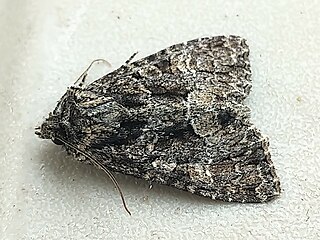
Platypolia mactata, the adorable brocade, is a species of cutworm or dart moth in the family Noctuidae. It is found in North America.
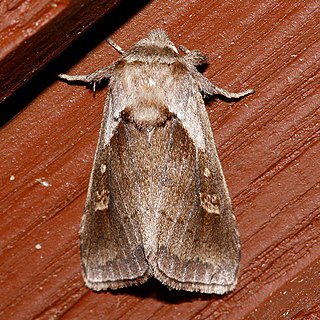
Bellura obliqua, the cattail borer, is a species of cutworm or dart moth in the family Noctuidae. It was first described by Francis Walker in 1865 and it is found in North America.
Agrotis buchholzi, or Buchholz's dart moth, is a species of cutworm or dart moth in the family Noctuidae. It was first described by William Barnes and Foster Hendrickson Benjamin in 1929 and it is found in North America.
Lacinipolia quadrilineata is a species of cutworm or dart moth in the family Noctuidae. It is found in North America.
Neleucania praegracilis is a species of cutworm or dart moth in the family Noctuidae first described by Augustus Radcliffe Grote in 1877. It is found in North America.
Eupsilia fringata is a species of cutworm or dart moth in the family Noctuidae first described by William Barnes and James Halliday McDunnough in 1916. It is found in North America.
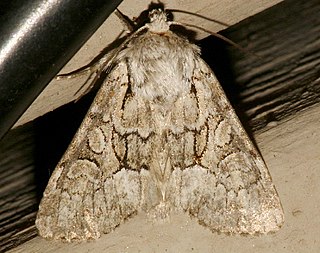
Eremobina claudens, the dark-winged Quaker or Alberta Quaker, is a species of cutworm or dart moth in the family Noctuidae. It was first described by Francis Walker in 1857 and it is found in North America.
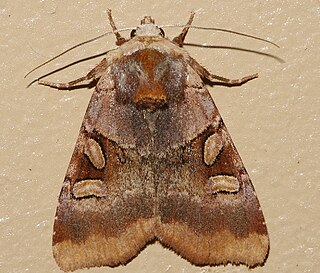
Xestia oblata, known generally as the rosy dart or ruby dart, is a species of cutworm or dart moth in the family Noctuidae. It is found in North America.
Dichagyris kyune is a species of cutworm or dart moth in the family Noctuidae. It was first described by William Barnes in 1904 and it is found in North America.
Dichagyris lobato is a species of cutworm or dart moth in the family Noctuidae. It was first described by William Barnes in 1904 and it is found in North America.
Apamea atrosuffusa is a species of cutworm or dart moth in the family Noctuidae first described by William Barnes and James Halliday McDunnough in 1913. It is found in North America.

Eurois astricta, the great brown dart, is a species of cutworm or dart moth in the family Noctuidae. It was first described by Herbert Knowles Morrison in 1874 and it is found in North America.
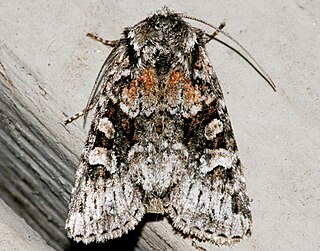
Lacinipolia cuneata, the cuneate arches, is a species of cutworm or dart moth in the family Noctuidae. It is found in North America.
Cerastis salicarum, the willow dart, is a species of cutworm or dart moth from the family Noctuidae.
Lacinipolia aileenae is a moth genus or species of cutworm or dart moth in the family Noctuidae. It is found in North America.
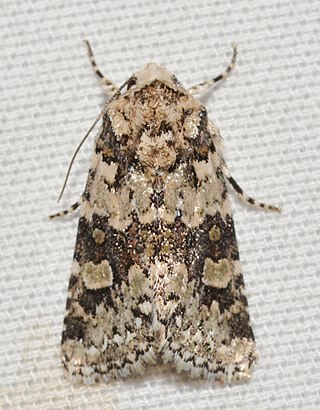
Lacinipolia buscki is a species of cutworm or dart moth in the family Noctuidae first described by William Barnes and Foster Hendrickson Benjamin in 1927. It is found in Australia and North America.
Lacinipolia spiculosa is a species of cutworm or dart moth in the family Noctuidae. It is found in North America.
Orthosia tenuimacula is a species of cutworm or dart moth in the family Noctuidae first described by William Barnes and James Halliday McDunnough in 1913. It is found in North America.
Homorthodes gigantoides is a species of cutworm or dart moth in the family Noctuidae first described by William Barnes and James Halliday McDunnough in 1912. It is found in North America.
Proxenus mindara, the rough-skinned cutworm moth, is a species of cutworm or dart moth in the family Noctuidae. It was first described by William Barnes and James Halliday McDunnough in 1913 and it is found in North America.






